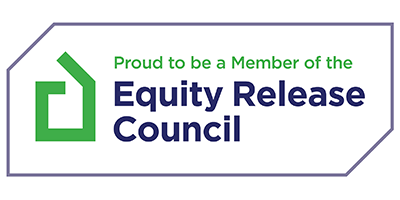In this article
A discounted variable rate mortgage is a type of home loan where the interest rate you pay is reduced for a set period.
The discount is applied to the lender’s standard variable rate (SVR), making your monthly repayments lower for a time.
As a first time buyer, you might hear this referred to as a discount rate mortgage, as both terms mean the same thing.
This type of mortgage is popular with people looking for flexibility and the chance to benefit from lower interest rates.
But it’s important to understand how it works before deciding if it’s the right fit for you.
Discounted Rate Mortgages
Explained in 1 min 11 seconds
Find more videos like this on MoneymanTV
How Does a Discounted Variable Rate Mortgage Work?
When you take out a discounted variable rate mortgage, the interest rate will be lower than the lender’s SVR.
The SVR is the basic interest rate that the lender can change at any time. The discount is usually set for an agreed period, often between two and five years, depending on the deal.
For example, if a lender’s SVR is 5% and the discount is 1%, you would only pay 4% interest during the discounted period.
Once the initial period ends, your mortgage will revert to the full SVR, which could be higher or lower, depending on the wider economic situation.
Since the rate is variable, your monthly payments can change during the discounted period.
If the lender raises or lowers their SVR, your discounted rate will rise or fall with it.
This can make budgeting more challenging because the amount you pay each month isn’t fixed.
Benefits of a Discounted Variable Rate Mortgage
The main benefit of a discounted variable rate mortgage is the potential to save money during the discount period.
For many people, the appeal lies in the lower initial monthly payments, which can ease the financial burden of the early years of owning a home.
If the SVR remains stable or falls during the discounted period, you could benefit from consistently low repayments.
This type of mortgage is also more flexible than some others, like fixed-rate mortgages.
You might be able to make overpayments without facing the same fees or penalties, depending on your lender.
This could help you pay off your mortgage faster or reduce the overall amount of interest paid over the term.
Speak to an Advisor – It’s Free!
Schedule a free callback from one of our experts today.
- All situations considered
- Transparent and honest mortgage advice
- We search 1000s of purchase and remortgage deals
Our customers rate us 4.9/5
Things to Consider with a Discounted Variable Rate Mortgage
While the savings are appealing, it’s important to understand the potential downsides of a discount rate mortgage.
Since the interest rate is tied to the lender’s SVR, your payments could increase if the SVR rises.
This makes a discounted variable rate mortgage less predictable compared to a fixed-rate mortgage, where your payments stay the same for a set period.
You also need to think about what happens when the discount period ends.
Once it’s over, your mortgage will switch to the lender’s standard variable rate, which is usually higher.
Unless you remortgage or switch to a new deal, you might face significantly higher payments.
It’s a good idea to keep an eye on your mortgage as the discount period comes to an end, so you can look for better options if needed.
Early repayment charges can also be a factor with some discounted variable rate mortgages.
If you decide to switch deals or pay off your mortgage early during the discount period, you might have to pay a fee.
Be sure to check the terms of your mortgage to understand if any charges will apply.
Is a Discounted Variable Rate Mortgage Right for You?
A discounted variable rate mortgage could be a good option if you’re comfortable with the idea that your payments might go up or down.
It works well for people who want lower initial payments and are able to manage any future increases in the interest rate.
It’s also worth considering if you think interest rates will remain stable or fall during your discount period.
This could give you the best of both worlds—lower payments upfront and the chance to avoid big rate rises later.
But, if you prefer more certainty in your monthly payments, a fixed-rate mortgage might offer more peace of mind.
Comparing a Discounted Variable Rate Mortgage to Other Types
When deciding on the right mortgage, it’s useful to compare a discounted variable rate mortgage with other common types.
For instance, a fixed-rate mortgage offers stability by keeping your payments the same for a set period, typically two, five, or even ten years.
The drawback is that fixed-rate deals can sometimes come with higher interest rates than discounted variable ones, meaning you might miss out on potential savings if rates fall.
Meanwhile, tracker mortgages are another variable option. Instead of being tied to the lender’s SVR, tracker mortgages follow the Bank of England’s base rate, which tends to be more predictable.
This could be more beneficial if you want a clearer understanding of what drives your interest rate.







